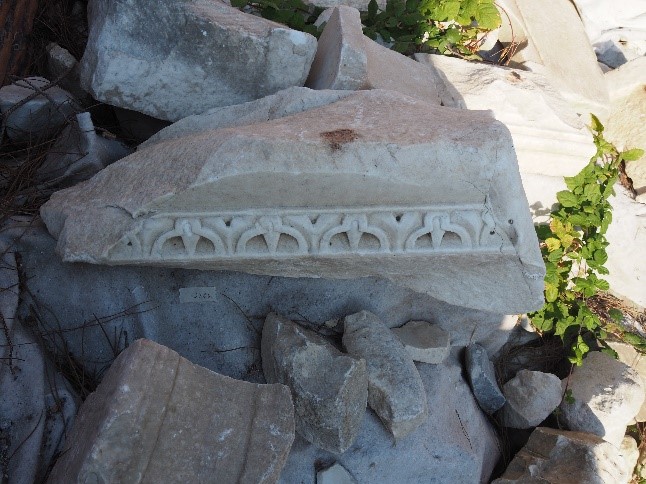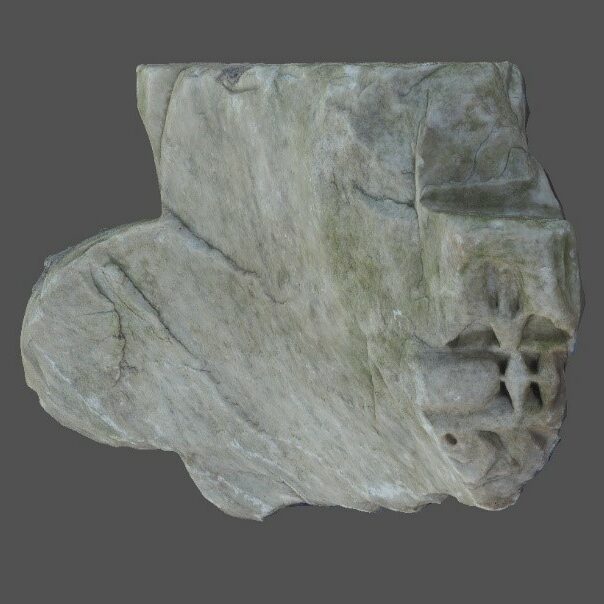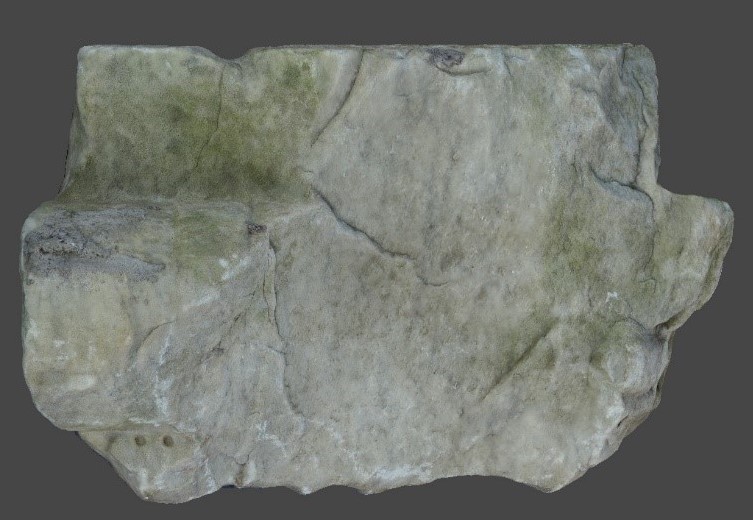During the excavations of the Forum of Ostia in the early 20th century, large quantities of archaeological material was unearthed. Among this material were large amounts of architectural marble fragments, which was gathered by the excavators in deposits/piles around the Forum area. These deposits would be left largely untouched until the meticulous examinations conducted by the Ostia Forum Project between 2014 and 2019. The examinations revealed a rich body of material stemming from several buildings around the forum dating to the Roman Imperial period. The largest of the deposits can be found in the area called TFR (Taberna Forum Rooms), which is located on the eastern side of the northern forum facing the Decumanus. This deposit contained thousands of architectural fragments – some of which are discernible as having been from elements such as capitals, columns, cornices, architraves etc. Many of these fragments are datable and can even be attributed to specific buildings around the forum, thereby having the potential to provide new insight into the appearance of Ostia’s Forum in the Imperial period. It is therefore the aim of this Ph.d. project to 1) create an overview of the material in the shape of a database and 2) to determine and virtually reconstruct the marble furnishings in their original context.

The focus of study is for the moment on the southern part of the Forum where several marble-clad, public buildings were built during the Early Imperial period (1st – early 2nd centuries CE). This includes the supposed first marble building of Ostia, the Temple of Roma and Augustus, from which we have found several fragments relating to the entablature and parts of the interior decoration. The deposits likewise contain several fragments from other known buildings such as the large Basilica on the west side of the Forum, the Tempio Rotondo complex, the Palaestra of the Forum’s Baths, and the Capitolium.
Apart from the traditional archaeological methods such as drawing, an important tool used for documenting the marbles of the forum is 3D modeling. Generated from a series of photos of the fragment through photogrammetry software (Agisoft Metashape), the dimensionally accurate models have proven to be very useful in day-to-day research where access to the actual fragments is restricted. This is due to the fact that the models can be used to visualize and measure the fragments from every angle, which is essential when trying to determine the context from which the fragments originate. Apart from being useful in their own right, these 3D models can likewise be included into larger virtual reconstructions of whole buildings showing the marbles in their original position. These kinds of reconstructions allow us to see the building and its various elements from different angles and under different light conditions as well as its relation to the surrounding buildings. All these factors are important when attempting to get an idea as to how the average Roman would have experienced these buildings and the Forum in which they stood.


You can find more here.
